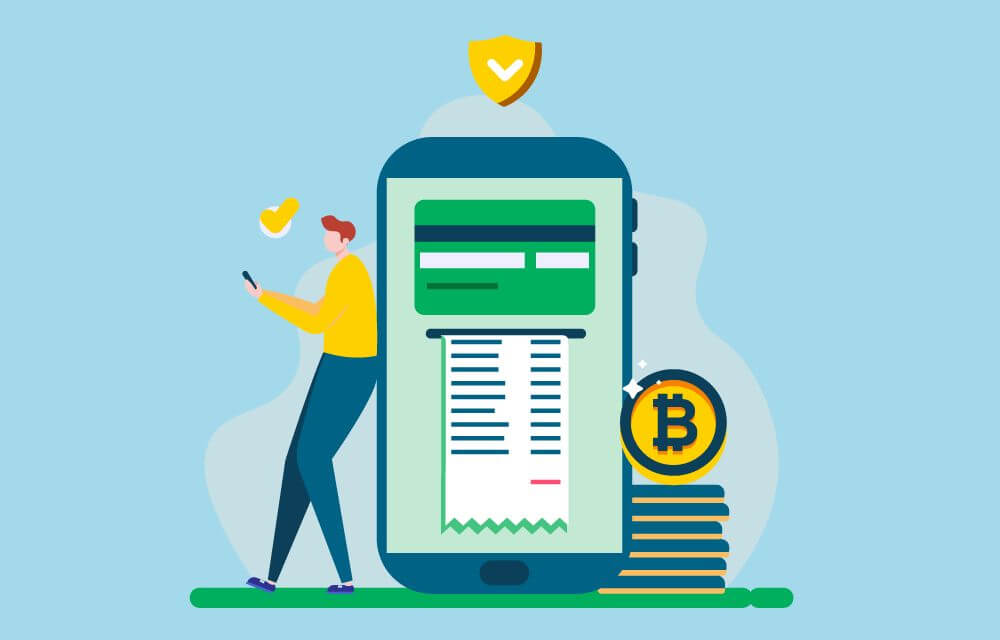
What is Bitcoin?
Bitcoin was launched on 9 January 2009, as an open-source decentralised digital currency secured through cryptography on a blockchain. It was the world’s first cryptocurrency, and every crypto that came after can be termed an ‘altcoin.’
Today, Bitcoin is the world’s biggest cryptocurrency by market capitalization, and is often referred to as ‘digital gold.’ Despite its huge success, no one actually knows who invented Bitcoin, other than they used the pseudonym ‘Satoshi Nakamoto.’
| Did you know? Several different people are suspected of being Satoshi Nakamoto. These include: SpaceX and Tesla founder, Elon Musk Australian computer scientist, Craig Wright Japanese-American physicist, Dorian Satoshi Nakamoto American computer programmer and cryptographer, Nick Szabo American cryptographer, Hal Finney Source: Forbes Advisor |
Bitcoin Basics

Bitcoin’s usual currency code is BTC – which you’ll see listed on exchanges. Each BTC is divisible into eight decimal places, with a millibitcoin (mBTC) equivalent to 1/1,000 of a Bitcoin and a satoshi (sat) equivalent to 1/1,000,000,000 of a Bitcoin. This means that, even if Bitcoin prices reach $1 million per Bitcoin (which many analysts believe is possible), it will still be useful for everyday transactions.
Bitcoin Blockchain
In a nutshell, the Bitcoin blockchain is an immutable public ledger, which forms an ever-growing ‘chain’ of blocks – hence the name ‘blockchain.’ The network itself is made up of a vast, decentralised mesh of nodes which validate individual transactions. To ensure integrity of the chain, each node stores its own copy of the Bitcoin blockchain, and then every ten minutes or so, a new batch of transactions is written into a new block of the blockchain. All nodes in the network are then automatically updated with the updated blockchain.
Bitcoin Mining

The individuals or groups who run the network, providing the processing power and electricity, are called miners.
In very simple terms, miners ensure the integrity and security of the blockchain by using a proof-of-work mechanism to verify each new block and link it to the previous – this involves solving a hugely complicated mathematical problem, which requires a lot of computing power. The miner that successfully solves it, or ‘finds the new block’, is rewarded with any transaction fees they include in the block (transaction fees are optional with Bitcoin) and a set amount of newly minted Bitcoin.
Bitcoin Supply
There will never be more than 21 million Bitcoins – all of which will have been minted by miners. To ensure a sustainable ecosystem, the amount of BTC awarded to miners for adding a block halves every 210,000 blocks. This is known as The Halving and happens roughly once every four years. As a result, mining Bitcoins will become progressively more difficult, until the final Bitcoin is minted – after which, miners will need to rely on transaction fees alone.
This limited total supply, and throttled mining, ensures that Bitcoin should be deflationary – the exact opposite to the inflationary nature of fiat currencies, which are consistently devalued by constant printing. It is also why many analysts predict incredible eventual dollar prices for Bitcoin.
Bitcoin Adoption & Usability

Although Bitcoin is by far the biggest cryptocurrency in terms of market capitalization, as its price has increased people are increasingly holding it as a long-term investment (so-called ‘hodlers’) rather than using it for day-to-day transactions. Despite this, Bitcoin is very widely accepted by all kinds of online and offline businesses around the world.
Bitcoin Network Fees & Speed
Although Bitcoin uses the very processing power-intensive proof-of-work network consensus mechanism, because it does not support smart contracts, and so is not used by DeFi projects, the network isn’t as congested as it would otherwise be. Still, Bitcoin transactions can be relatively slow, often taking 30 minutes or more, and fees can be on the high side.
Layer 2 protocols and side chain projects that run on top of Bitcoin have expanded the scalability and utility of Bitcoin. One such project is the Lightning Network. Very simply, this batches related Bitcoin transactions offline, before sending them on-chain as a single transaction – thus making it more feasible to use Bitcoin to pay for everyday low-priced purchases, like cups of coffee or sandwiches.
| Did you know? It is widely thought that the first real-world purchase made using Bitcoin, took place on 22 May 2010, when a man in Florida paid 10,000 BTC for two Papa John’s pizzas. The pizzas were worth around $25 at the time. In November 2021, the BTC the man paid for then would have been worth over $685 million. Source: US News |
Bitcoin Security and Safety
Despite being the oldest cryptocurrency and blockchain network, Bitcoin has stood the test of time well. Its highly decentralised structure, complex proof-of-work consensus mechanism, and highly active developer community has enabled it to stay at the forefront of security.
When it comes to privacy, Bitcoin offers users a reasonably high degree of anonymity, but not to the point of so-called ‘privacy coins’ like Zcash and Monero. In effect, it means for the vast majority of transactions, BTC is essentially anonymous, but law enforcement authorities are able to effectively use blockchain forensic techniques to trace parties to transactions. However, this is an extremely expensive and time-consuming process, so it’s only used in major, high-priority investigations.
Security and safety tips:
- Don’t leave your BTC on exchanges. Use exchanges for buying and selling only. Always transfer your crypto to a local wallet for short-term storage.
- For long-term storage, keep your crypto in a hardware wallet.
- Always keep your wallet keys in multiple safe places – they cannot be recovered.
- Never tell anyone about your crypto holdings. No matter how secure your storage is, if you or your loved ones are physically threatened, you’ll probably hand over your personal keys.
Bitcoin Volatility
There’s no doubt about it, all cryptocurrencies (with the exception of stablecoins) are volatile by nature. As the first crypto, Bitcoin itself set this trend, and all altcoins have followed suit to one degree or another.
The Crypto Rollercoaster

Although Bitcoin launched in January 2009, it took until February 2011 for its price to break the $1 mark. However, it was in 2013 that the original cryptocurrency really took off, seeing an incredible 6,600% gain in the year, peaking at $1,100 in December. By then, Bitcoin had been joined by altcoins like Litecoin and Dogecoin, and crypto was becoming a topic of conversation among the wider tech community.
Though Bitcoin had a quiet period during 2014 – 2016, falling back down to the $200 – $400 range, it broke its previous $1,100 record in January 2017, and then went on to rocket to nearly $20,000 by December of that year. By this point, many millionaires had been made, and stories about Bitcoin were appearing in the mainstream media, generating a mining and retail investor frenzy – something that only added to the crypto’s volatility. Accordingly, by January 2020, the price had again fallen to just over $7,300.
Then, as the COVID-19 pandemic hit and lockdowns kept half the world at home, millions of bored Bitcoin newbies jumped on the bandwagon and powered the biggest bull run to date. The halving in May 2020 further fuelled the speculation, and by August 2021, Bitcoin hit $46,000, before powering on to a record of more than $68,500 in November.
From there, a myriad of factors, including China banning Bitcoin mining, political interference and regulatory uncertainty, and increased scepticism among investors, led to a price collapse. By mid-2022, Bitcoin had settled to bouncing around the $20,000 mark.
So, as you can see, when dealing with Bitcoin, you should stand back and look at the big picture rather than getting lost in day-to-day price movements.
| Did you know? Ark Invest founder, Cathie Wood, has predicted Bitcoin will reach $1M by 2030. Her reasoning is that BTC will emerge as a safe haven from the inflation which was taking hold in many countries. Source: Yahoo Finance |
Final Word on Bitcoin
Bitcoin stands out as the iconic cryptocurrency. It has stood the test of time and proven its detractors wrong. It may have started out as a fringe novelty, but it’s turned into a mainstream global digital asset. While it may not be the most efficient cryptocurrency for day-to-day purchases, and it doesn’t support smart contracts, it does make the perfect choice for those looking to invest, or protect their wealth, over the long term.
Similar Cryptos to Bitcoin
During its evolution, there have been two major hard forks from Bitcoin, resulting in Bitcoin Cash (BCH) and Bitcoin Gold (BTG). There was also a subsequent fork of Bitcoin Cash, resulting in Bitcoin SV (BSV). Needless to say, they are technically very similar to the original Bitcoin, but have changes to make transactions quicker and cheaper, in an effort to make them more suitable for everyday transactions. Litecoin (LTC) was also based on a modified Bitcoin codebase. Although it is similar to Bitcoin, again it has been geared towards cheaper and quicker transactions.
